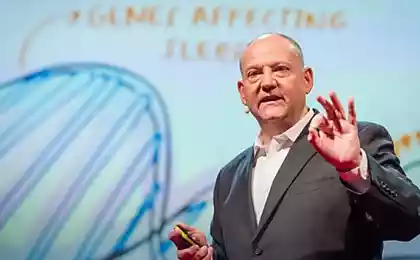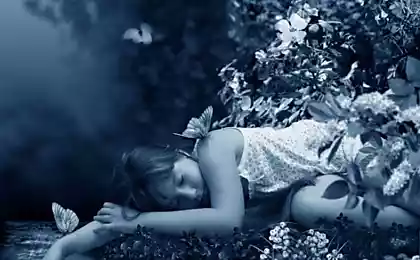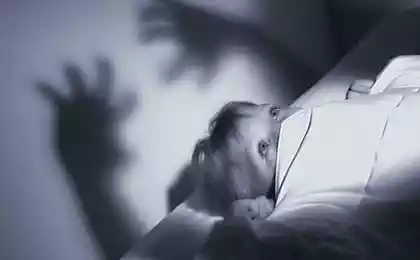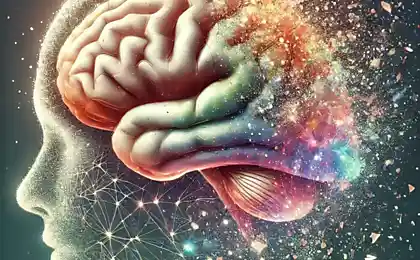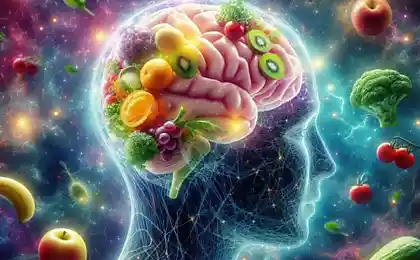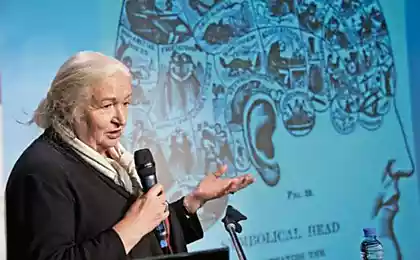720
How the brain reacts to even minor experiences and useful than nightmares

Introducing the book by Andrea Rock 'brain during sleep. What happens to the brain while we sleep ", which releases the publishing house" Mann, Ivanov and Ferber. "
We are not so concerned about their dreams, dreams to what we care about.
Rosalind Cartwright
Half past ten at night. Chicago. Outside the window, a sleep lab - a soft, cool July. A man of thirty is sitting on the edge of the bed and without much interest in looking at the TV screen. By his head attached to electrodes as lab staff are going to record the electrical activity of the brain during sleep. He's here because responded to an ad in the newspaper: Laboratory invited volunteers to study the dreams of those who have recently gone through or is going through a divorce. A man was warned that any time upon the occurrence of REM sleep will rouse his soft voice laboratory located in another room, the same voice will ask him to recite on the heels sleep and talk about the emotions he experienced. "At home, I rarely remember dreams, but here in the lab when I was awake even before, like a dream is over, I can always describe and events, and the environment and the characters. Only here I realized that I probably had dreams constantly and houses, "- says the test
.
This young man, whose marriage broke up six months ago - is one of the thirty participants in the study, which leads Rosalind Cartwright: she checks his theory that the dream in its essence - the mood regulators, help us to process negative emotions, so when we wake up, our mood is better than ever before bedtime. And if this process is at night for some reason something goes wrong, as it should - then the dreams we also see some flat, unemotional - we wake up in the mood even more ill than before. This situation is familiar to people suffering from depression, said Cartwright, who directs the Center for Sleep Disorders Research at Presbyterian St. Luke's Hospital in Chicago. Her long study of those who went through the collapse of marriage, shows that the model of dreams in able to cope with the consequences of a divorce and move on is very different from the model of dreams in those Depression does not let go. data received by it comply with the theories of other scientists who, like her, believe that dreams help us to regulate emotional life.
Negative emotions appear in dreams are twice as likely than positive
Cartwright took up this issue in the early 1960s - when she herself had just gone through a divorce, established his first laboratory: "I was in a depression, could not sleep well, and I thought, why not use insomnia usefully?" Dreaming occupied her imagination since childhood because her mother, a woman of poetic warehouse, used to recite the breakfast extremely bright and vivid dreams, but his father, a man far more practical, insisted that he did not see dreams. "I'm terribly worried about this question: why would someone sees dreams, but still are interesting, and some do not?" - Says Cartwright
.
At the beginning of her career she worked for well-known psychotherapist Carl Rogers, and then fascinated by the new area at the time. I learned it on sleep research by his secretary, who had an affair with William Dement, when he was still working in the Chicago lab - the same one where the discovered REM (rapid eye movement phase -.. Ed.). "Sometimes, the secretary will speak on the phone with Bill and then all rattle about this interesting thing - when the eyes move behind closed eyelids. I was terribly bored her chatter, I had odёrgivat: we have a lot of work and so on. Then she married Bill and lives with him in perfect harmony, and to this day, and it did its job chatter: I "hooked" on the study of dreams "- says Cartwright
.
Her long-term studies the content of dreams - as well as the work of other scientists - have shown that in dreams dominated by negative emotions. In 1991, a comparative study to demonstrate that in reality people are more likely than in a dream, experiencing positive emotions and a sense of fear arises in my dreams many times more than during wakefulness. In general, two-thirds encountered in dreams emotions - negative properties. The data on which it is dominated by negative emotions, in different studies vary, but one thing is certain: they do not leave "negative range." For example, conducting a survey thousands of college students in 1966 showed that 80 per cent experienced by them in dreams emotions were negative, with half of them described as a feeling of fear, danger feeling some tension, and the second half - as sadness, anger or unpleasant embarrassment, confusion. A study conducted in 1996 in the Swiss Sleep Laboratory, says that negative emotions appear in dreams are twice as likely than the positive, negative feelings among the most typical of anger, fear and the oppressed, the voltage. An analysis of more than 1,400 reports of dreams, conducted by Tufts University, has shown that dreams often dominated by fear, behind him are helplessness, anxiety and guilt.
Of course, dreams manifest and positive emotions. The Norwegian study in 2001 reported that most of the respondents called the feeling of elation, joy (36 percent), followed went surprisingly - 24 percent, anger, anger, were 17 percent, worry and fear - 11 percent and sadness - 10 percent. Head of the study Roar Fosse explains prevalence of positive emotion conditions of the experiment. Scientists used a portable electroencephalography, and the subjects slept at home. They were awakened when the occurrence of the REM phase, and they should not only describe the dream, but also on their own to celebrate, what emotions they prevailed. Fosse suggests that the experts who analyzed the reports of dreams, have tended to underestimate the occurrence of positive emotions, moreover, when a person is dreaming about something unpleasant, he tends himself to wake up, and as he wakes up in the middle of a dream, the dream and remembers better. Cartwright it argues that in her research subjects awakened, but most reports still describe emotion negative, as evidenced by other studies. Fosse also allows the interference of other factors, including different perceptions of emotions and different types of personality test, and those moments when large-scale studies should be considered mandatory. In studies Fosse participated in only nine of the subjects between the ages of 31 to 60 years.
These are the emotions that we night be redesigned to meet the new day with new forces
This predominance of negative emotions led Cartwright to assume that during the REM phase, when we see the most complex, vivid dreams, there is the integration of emotional experiences, particularly stress or pose a threat to self-esteem. This hypothesis is also consistent with reported that dream phase in REM sleep are autonomous process a processing information related to survival. "Our brain gives everyone experience their emotional assessment, and what is taken for processing into REM sleep, for the most part is an experience that causes anger, fear, depression or anxiety. A cocktail of negative and positive emotions may be the proportion of 60/40 at the one who is in good shape and whose emotional day, as they say, went wrong, to 95/5 from someone who has faced a lot of problems, but there is no doubt that all the negative share still prevails. These are the emotions that we night be redesigned to meet the new day with renewed vigor, "- says Cartwright
. Her theory was confirmed using unfolded in the late 1990s experiments on brain imaging, when it became apparent that the structure of the limbic system - the emotional memory center - work in the REM phase of more active than during wakefulness, while those parts of the prefrontal cortex, which manage logical thinking, almost inactive. Moreover, those areas of the cortex, which are activated in the REM phase, have numerous anatomical relation to the amygdala - that portion of the brain that includes the fight or flight response and plays an important role in the unconscious emotional learning. One of the leading researchers of REM sleep using visualization Pierre Mac believes that the interaction between the specific parts of the brain actually reflects the process of formation of emotional memories.
Cartwright says that when we dream, we update our understanding of ourselves. Of course, happen overnight, when dreaming is not so much work, because in this period of life does not present any surprises, but mostly we go to sleep with the luggage of some unresolved emotional issues. This may be a minor blow to the self-assessment - for example, you overheard, someone said, if you put on weight, or a slight concern because of the situation on the job, and perhaps a serious disorder because of a quarrel with a spouse or iz for the child. When you enter the REM sleep and the brain turns on a system of emotional memory, it will be taken to design a dream - to combine images, one way or another associated with the emotion that prevailed on that day. "In the period of wakefulness, we usually think of a logical, linear way, when one follows from the other, - says Cartwright. - But dreams are made like plaid: recent memories are superimposed on earlier memories, and all this is due to a feeling rather than logic »
.
Source: lookatme.ru


